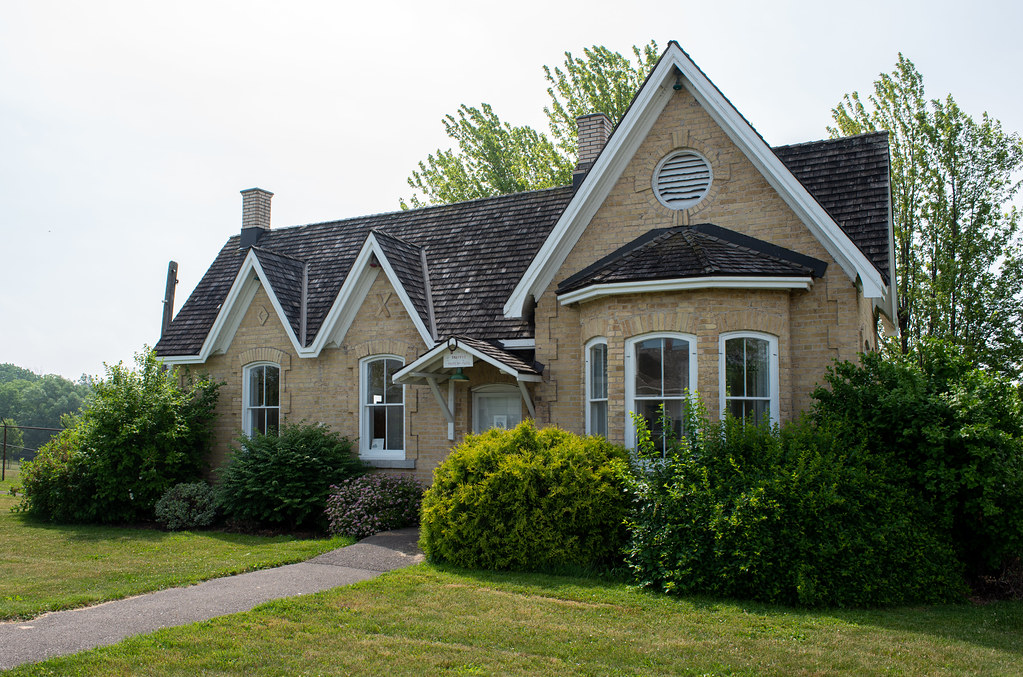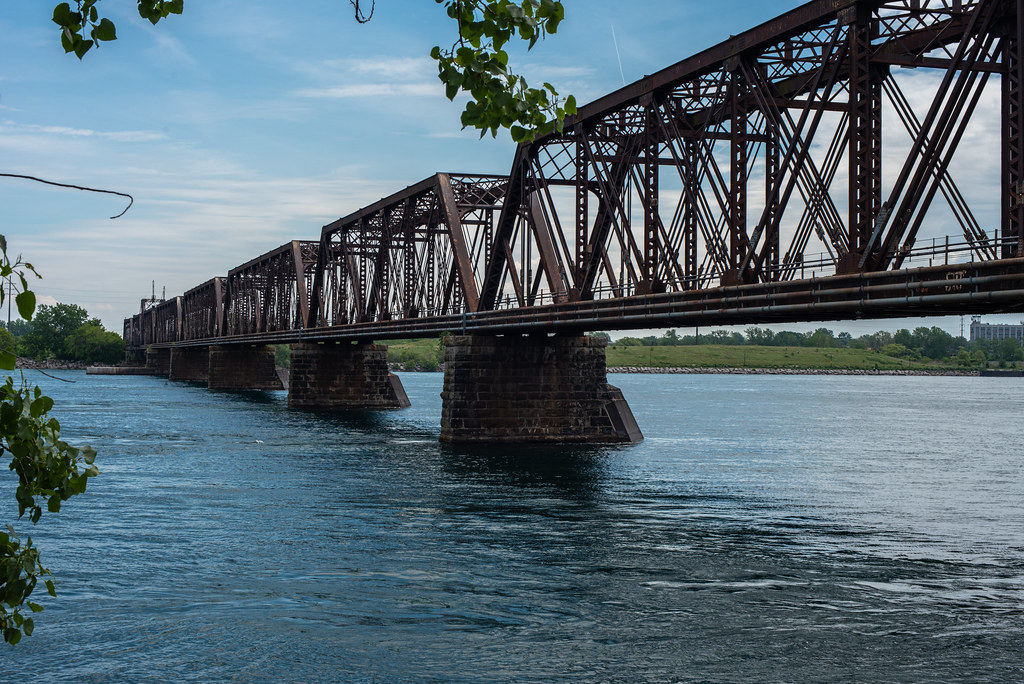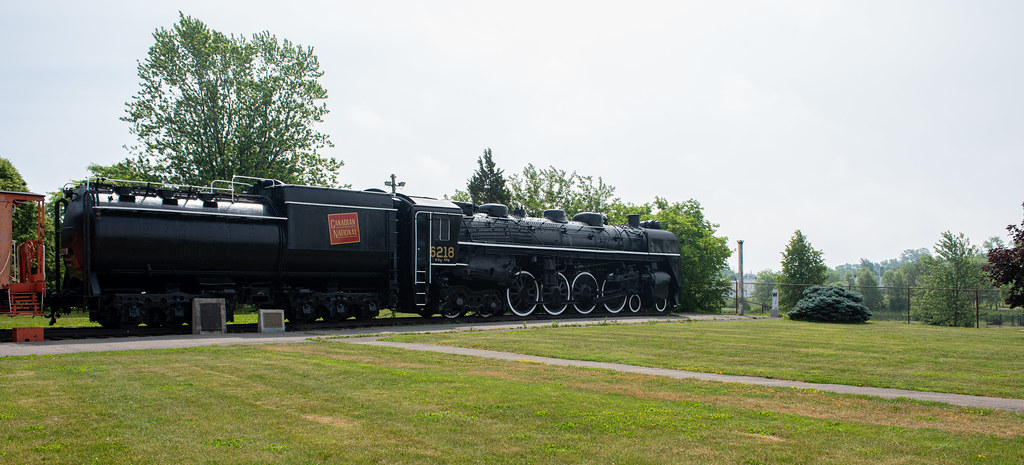While there are certain stations out there with more interesting histories and stories that go along with them, others have simply done their job and then been disposed of. Oftentimes, that is with a demolition, which has resulted in the loss of many stations across Ontario. And the small community of Bridgeburg has lost a great many stations.

Graflex Crown Graphic – Nikon Nikkor-W 1:5.6/180 – Ilford HP5+ @ ASA-200 – Pyrocat-HD (1+1+100) 9:00 @ 20C
Do not worry if you haven’t heard of the community of Bridgeburg. The community owes its existence to the International Railway Bridge, which opened to traffic in 1873. The community’s name has changed a few times before being absorbed into Fort Erie by the 1970s; it has been Victoria, International Bridge, and finally Bridgeburg. The small community flourished and would overtake nearby Fort Erie, with the railroad being the main focus for the community’s economy. With three railroad operators using the International Railway Bridge, the town had three railway stations in the town proper to serve passengers. Grand Trunk having the main passenger station with Canadian Southern and eventually Toronto, Hamilton & Buffalo, both operating stations in Bridgeburg. These three stations were all located along Courtwright Street. Over the course of the history of passenger services across the bridge, these stations were replaced at least once, especially in the massive efforts to modernize railway services in Ontario that took place in the early 20th Century. Sadly none of these stations survived in any form, and most were demolished by the 1970s and 1980s.

Nikon D750 – AF-S Nikkor 28-70mm 1:2.8D
Nikon D750 – AF-S Nikkor 28-70mm 1:2.8D
But one station did survive, known as B-1, or Bridgeburg B-1. The B-1 station opened at the same time as the International Railway Bridge in 1873. The station is located next to the bridge’s Canadian entrance sitting on the berm above Niagara Blvd. It is unique in several ways for a railway station of its day. First of all, it did little in passenger service for the first part of its life, mainly for traffic and customs control along with toll collection for non-Grand Trunk trains driving over the bridge. Combined with its partner station in Black Rock, known as B-2, it acted to control traffic over the bridge in the early days with only a single track on the bridge that could ensure that trains would not fatally collide head-on. The second unique part of B-1 is that it is constructed in the Gothic Revival architectural style. At the same time, Grand Trunk did not use the Gothic Revival much in their station designs, having only built one in Woodstock under the Great Western name. Internally the station featured a station master and telegraph operator office, a small waiting area, and a ticket window. Canadian National would take over operations at the B-1 and B-2 stations in 1923, seeing the advantage of having dedicated traffic control points for either side of the bridge. B-1 would receive a railroad red paint job in the mid-century like many other Canadian National Stations.

Nikon D750 – AF Nikkor 50mm 1:1.4D
Nikon D750 – AF-S Nikkor 28-70mm 1:2.8D
By 1980 most stations in Bridgeburg were gone, with only B-1 sitting next to the bridge and looking worse for wear. By this point, most yard operations had been moved from the Warren Street Yard to Black Rock. The need for keeping B-1 staffed was no longer important. The station itself was looking much worse for wear giving it was now over one hundred years old. The Fort Erie Railway Museum expressed an interest in saving the station rather than seeing the last surviving Bridgeburg station fall to the wrecking ball as all the other ones had. The old Michigan Central Station was last to fall in 1981. Canadian National was more than happy to sell the old station to Fort Erie for 1.25. Using extreme caution, the station was separated from its original foundation, then used a series of jacks and cribs to lift the station onto a railway flatbed, taken down the tracks to Central Avenue, loaded onto a truck and placed on a prepared foundation at the museum. The station was then repaired and restored. The architectural details were repaired and replaced with the red paint stripped to reveal the original yellow brick. Today the station remains at the museum along with a CN Locomotive, the Ridgeway Station and is used as the museum’s gift shop. It should be noted that B-1’s partner, B-2 remains in place as is a part of the still-active CN yard at Black Rock in Buffalo, New York.